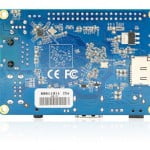
It’s not uncommon to find agents lining up to sell tax-saving products, such as life insurance policies that you may not really need, in the last few months of any financial year. They primarily cater to people who end up investing only to save taxes and only at the end of the year. If you are among those who are yet to make tax-saving investments for FY20, assess whether it would be better for you to switch to the new tax regime proposed in Budget 2020 before jumping into a long-term investment.
If the new tax regime indeed works for you, remember that it does not allow you to avail of any deductions or exemptions. So it may not be a good idea to commit your money to any long-term investment, which requires a yearly contribution, with the purpose of saving tax.
The government is expecting a large part of the population to join the new tax regime that has seven income tax slabs. Recently, revenue secretary Ajay Bhushan Pandey said that about 80% of the taxpayers will opt for the new tax regime and about 70% will be able to save tax under it.
Read more about why it would make more sense for you to invest in products that require a one-time contribution. We also give you a list of products that only need a one-time or minimal contribution to help you tide over the current tax-saving season in case you’ve decided to opt for the new tax regime in the next FY.
The case for one-time tax-saving investment
If you are a salaried individual, you have the option to switch in and out of the new tax regime each year, depending upon which system suits you. To decide between the two systems, evaluate your benefits under both. The income tax department’s e-filing website (www.incometaxindiaefiling.gov.in) has in fact put up a calculator to help taxpayers compare the tax payout between the old and new tax regimes for FY21.
Before you buy just about any financial product and invest an arbitrary amount in it, estimate your total taxable income for the year and the scope of saving taxes by way of investing in different products, not only for this year but for the next year as well. If you are better off under the new tax regime, ideally opt for instruments that do not require yearly contribution.
There are various tax-savings products that do not require you to make mandatory investments year-on-year or need just a small token amount to be invested each year to keep the account operative.
Equity-linked savings scheme (ELSS): Investment in ELSS funds, which are diversified equity funds, offers deduction up to ₹1.5 lakh under Section 80C of the Income-tax Act, 1961. ELSS has a lock-in period of three years, the lowest among products covered under 80C. You are not required to invest the same or any amount every year in ELSS.
The returns are market-linked and gains are treated as long term and taxed at 10%. Note that long-term capital gains from equity investments, including tax-saving mutual funds, are exempt up to ₹1 lakh in a financial year.
Public Provident Fund (PPF): The other investment product you can look at is PPF. Government-backed PPF is one of the most popular Section 80C instruments. You can invest a maximum of ₹1.5 lakh in PPF. Though PPF comes with a lock-in of 15 years (which can be extended in blocks of five years), you can invest just ₹500 per year to keep the account alive in later years.
The interest rate on PPF is revised quarterly; currently, the rate is 7.9% per annum. They also come with partial withdrawal and loan facilities. The most attractive feature is that maturity proceeds and withdrawals are tax-free.
National Savings Certificate (NSC): NSC currently gives an interest rate of 7.9% per annum. The minimum you can invest is ₹100 with no upper limit. However, you are not required to mandatorily contribute any amount every year. Investment in NSC qualifies for tax deduction under Section 80C in the same FY.
The interest amount accrued yearly on NSCs is deemed to be reinvested on behalf of the investor and qualifies for deduction under Section 80C within the total limit of ₹1.5 lakh. The final year’s interest amount is, however, not eligible for deduction as it is not reinvested. The final year’s interest income instead gets added to the holder’s income and is taxed accordingly.
Sukanya Samriddhi Yojana (SSY): This is a social welfare scheme meant for up to two girl children and currently provides an interest rate of 8.4% (for the current quarter) compounded annually. The minimum amount required for opening SSY is ₹250, which is also the minimum annual investment limit. Contribution up to ₹1.50 lakh qualifies for deduction under 80C.
SSY accounts mature 21 years from the date of account opening. Partial withdrawal is allowed after the girl child turns 18. The interest earned and maturity amount is tax-free.
Tax-saving bank or post office fixed deposits: This special category of bank FDs can help you claim deductions under Section 80C. Five-year post office term deposits also qualify for this tax benefit. But there is a minimum lock-in period of five years. The State Bank of India, for example, is offering an interest rate of 6% on these deposits. Here, too, you are not required to invest any amount on an yearly basis.
Don’t go by tax break over long term
There are various instruments that are eligible for tax deduction but require you to invest the same amount every year over a long term. Evaluate whether such products fit into your long-term financial plan or provide security instead of just getting swayed by the tax incentives they provide.
Two such products are life and health insurance. A term plan is the cheapest form of life insurance as it only charges the cost of insurance and keeps out any investment benefits. Any individual who has dependants must buy a term plan, whose premiums qualify for deduction under Section 80C. Given the rising medical costs, health insurance is another must-have product. The premiums you pay are eligible for deduction benefit of up to ₹25,000 under Section 80D. If you stop paying premiums after a year, the policy lapses, though it is advisable to continue a health policy for various benefits to accrue over the years.
“The way to look at any product is to assess the need. For instance, medical insurance is indispensable and so is a term life insurance plan (for most people). As long as you are investing in a product that serves your financial needs, the tax benefit it provides can be ignored,” said Rohit Shah, founder and chief executive officer, Getting You Rich, a financial planning firm.
If you are investing in a long-term tax-saving product, don’t forget to look at the need it serves.











